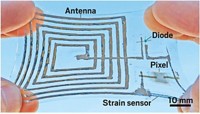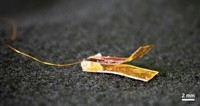Advertisement
Grab your lab coat. Let's get started
Welcome!
Welcome!
Create an account below to get 6 C&EN articles per month, receive newsletters and more - all free.
It seems this is your first time logging in online. Please enter the following information to continue.
As an ACS member you automatically get access to this site. All we need is few more details to create your reading experience.
Not you? Sign in with a different account.
Not you? Sign in with a different account.
ERROR 1
ERROR 1
ERROR 2
ERROR 2
ERROR 2
ERROR 2
ERROR 2
Password and Confirm password must match.
If you have an ACS member number, please enter it here so we can link this account to your membership. (optional)
ERROR 2
ACS values your privacy. By submitting your information, you are gaining access to C&EN and subscribing to our weekly newsletter. We use the information you provide to make your reading experience better, and we will never sell your data to third party members.
Energy
Backward battery delivers ions to cells
Device could lead to biosensors and implants to treat neurological disorders
by Stu Borman
July 27, 2017
| A version of this story appeared in
Volume 95, Issue 31

In lithium-ion batteries, ions flow internally between electrodes while electrons flow into an external circuit. It is difficult for these batteries to interact directly with biological systems without causing damaging electrochemical reactions that can decompose tissues and cell electrolytes.
Liangbing Hu of the University of Maryland, College Park, and coworkers have now developed an “electron battery” that works the other way around, using an internal electron flow to produce an external ion current (Nat. Commun. 2017, DOI: 10.1038/ncomms15609).
Such a device could stimulate nerve-cell signaling or muscle movement in people with nervous system or motor impairments. It could help researchers measure ionic processes in cells, and an implantable version could controllably dose lithium ions to people with bipolar disorder.
The electron battery’s internal circuit consists of a lithium metal anode and vanadium oxide cathode in separate electrolyte-filled glass tubes, connected by an electron-conductive wire and sealed with ion-exchange membranes. The ion-exchange membranes are connected to Kentucky bluegrass stems infused with the ion to be transported, such as lithium, sodium, potassium, or calcium. And the stems are dipped in an electrolyte solution containing cells.
The chemical potential difference between the electrodes causes anode-to-cathode flows of electrons through the wire and ions through the external circuit. Ions passing through the cell solution also generate an electric field that can induce the flow of ions, such as calcium, through ion channels in the cells. Cells spiked with a calcium-responsive fluorescent protein glowed more intensely when the researchers passed an ion current through them.
“The work’s real value is in its promised biocompatibility,” comments Ping Liu of the University of California, San Diego, an expert on batteries and energy storage. He thinks researchers should try to develop a broader range of materials to transmit ion flow, in addition to the grass stems. Hu says his group is indeed pursuing such research.





Join the conversation
Contact the reporter
Submit a Letter to the Editor for publication
Engage with us on Twitter